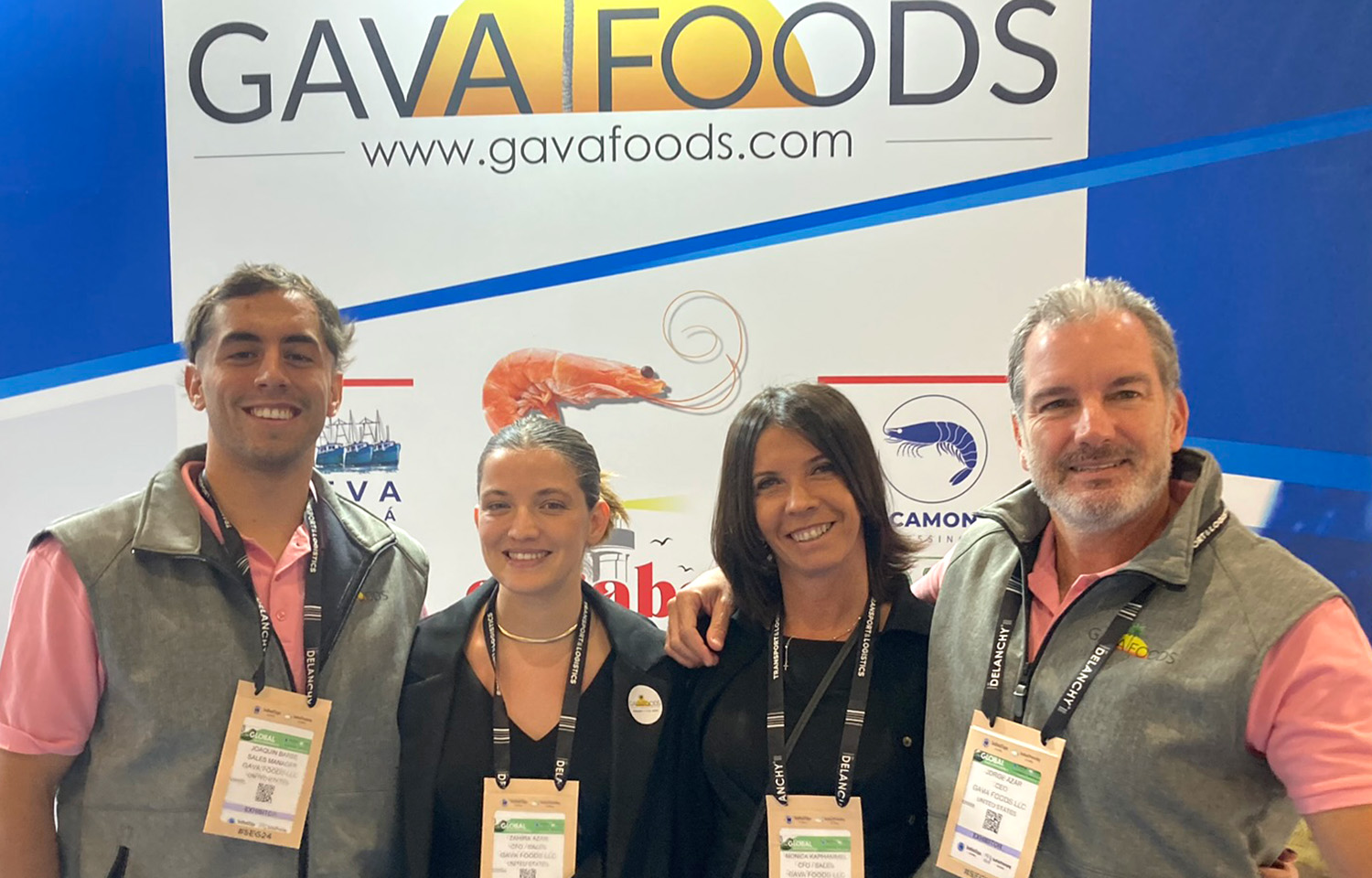Gava Foods CEO Jorge Azar is a Uruguayan national with a sizeable Ecuadorian shrimp business, and now he’s hoping to put Panama on the world’s seafood map.
Azar got his start in the seafood industry operating cold storage and packing facilities for hake and squid caught in the South Atlantic and brought into Montevideo, Uruguay. Gava Foods still operates that business, offloading hake from the domestic and Spanish fleets and processing and shipping fillets and steaks for retail and foodservice in the U.K. and U.S.
In 2003, Azar jumped into Ecuador’s shrimp sector, during a time when there was a decline in Uruguay’s fishing business and a downturn in Ecuador’s shrimp sector caused by an outbreak of white spot syndrome that began in 1999.
“At that time, Ecuador’s whole shrimp industry was destroyed, but it had established a place in the market. I had a lot of European and American clients asking whether I could get them Ecuadorian shrimp,” Azar told SeafoodSource at the 2024 Seafood Expo Global in Barcelona, Spain. “I went there out of curiosity and found myself in an industry that needed a lot of sales.”
Azar put the shrimp inside his company’s distribution network and began doing one container per month in exports. As the popularity of Ecuador’s shrimp exploded globally and its production skyrocketed, Gava Foods cashed in. It formed a distribution partnership with Danish firm Nordic Seafood, and sales took off.
“Now, we’ve grown that to 40 containers per month,” he said. “We got in at the right time and went with the wave.”
Gava Foods has its own shrimp farms, processing plants, and export operation in Ecuador. Azar called his Ecuadorian business, which ships 1 million to 1.2 million pounds monthly to the U.S., Europe, and elsewhere in South America “a very stable, long-term operation.”
“Ecuador has grown into a market position that can’t be replaced,” he said.
Fast forward to 2018, and Azar began looking for his next opportunity. Several of his clients had begun to ask about whether he had access to wild-caught shrimp. Gava Foods had formed a partnership with Panamanian shrimp-farming firm Camaco, which is owned by Grupo Calesa, for exclusive distribution of its shrimp, and Azar was in Vacamonte, Panama, when he saw a ship unloading “beautiful, large white shrimp” in the port.
“I immediately thought, ‘We can do something with this,’” he said.
Partnering with Camaco, Gava Foods worked to implement quality control, separating “A” premium quality shrimp to use for exports and then sending a few trial shipments to the U.S. market.
“In the U.S., they already knew about Panamanian shrimp,” Azar said. “All the clients started accepting it and then asking for more.”
In 2020, the Covid pandemic hit, but it proved to be a boon for Gava Foods, as shrimp sales took off in the U.S.
“It was good timing for us, as a lot of new people were buying shrimp and became introduced to the Panamanian product,” Azar said.
Panama has a “rich history” of shrimp fishing, with commercial activity starting in the 1960s, according to Azar. But, as shrimp farming picked up in the country, the wild-catch sector did not receive sufficient investment. Panamanian fishing laws, which strictly enforce the twice-a-year shrimp seasons and fallowing periods where fishing is prohibited, have also encouraged more rapacious fishing firms to fish elsewhere, Azar said. The annual catch is limited to around 5,000 metric tons.
“The fishery is good because it's a very protected fishery. When it's time to tie up the ships to the dock, we do it. Then, when we have the season open, we go out fishing,” he said. “That means the resource is still there. So, I think the government does a pretty good job in that sense. Maybe some consider it a little bit overprotected, but in the long run, I think it's worked out okay.”
Azar also said the water quality where the shrimp is caught in Panama – on the country’s Pacific coast, between one and six hours out of the port of Vacamonte – results in 90 percent of the caught product coming in as ...








